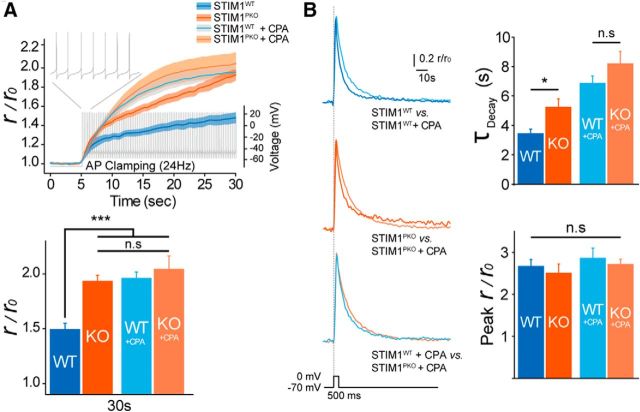Figure 4.
Blocking SERCA reproduced abnormal Ca2+ dynamics observed in STIM1PKO mice. A, CPA (30 μm) elevated the level of accumulated Ca2+ in wild-type mice to that of STIM1PKO mice. Under the same firing rate as achieved by AP clamping, Ca2+ more rapidly accumulated after CPA treatment (top). At the 30 s point, the changed Ca2+ signal ratio of wild-type mice was significantly lower than that of CPA-treated groups and STIM1PKO mice (wild-type, n = 7; STIM1PKO, n = 7; wild-type + CPA, n = 7; STIM1PKO + CPA, n = 8; F = 8.589, p < 0.001, bottom). Lines and shaded areas show the mean and SEM. B, Prolonged decaying τ of Ca2+ transient by CPA treatment. Representative traces with fitted single exponential curves (left). Decaying τ became significantly longer in CPA-treated groups (wild-type, n = 15; STIM1PKO, n = 13; wild-type + CPA, n = 9; STIM1PKO + CPA, n = 9; F = 14.492, p < 0.001, top right). Peak values were not different among all groups (F = 0.562, p < 0.643, bottom right). Drug-untreated data from wild-type and STIM1PKO mice were pooled from Figure 1. One-way ANOVA with post hoc Fisher's LSD test for statistics. Error bars denote the SEM. *p < 0.05; ***p < 0.001.

